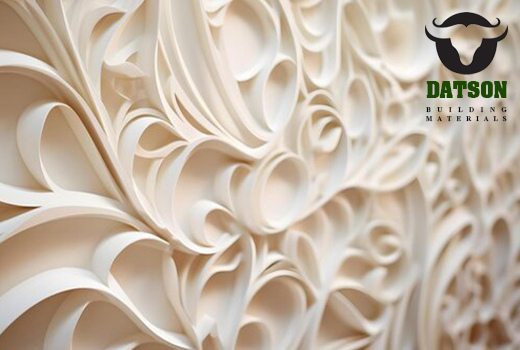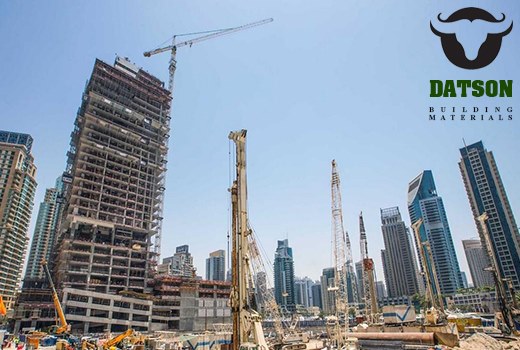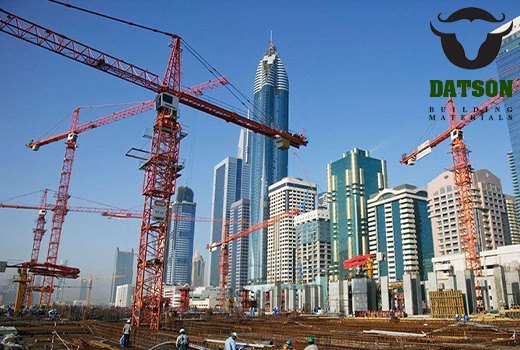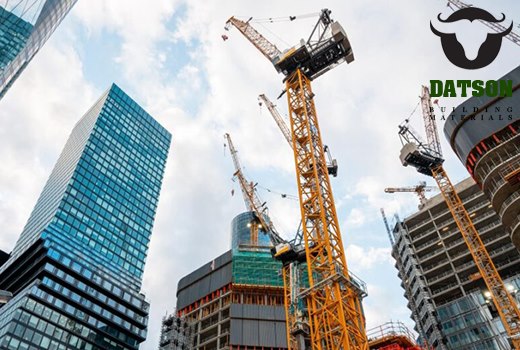In recent years, white cement in prefabricated construction has gained significant traction due to its aesthetic appeal, versatile applications, and structural performance. Whether it’s the crisp finish of architectural panels or the smooth surfaces of decorative features, the use of white cement in prefabricated construction offers multiple benefits that are hard to ignore.
This article explores why manufacturers and designers are increasingly turning to white cement for prefab components, detailing its aesthetic and technical advantages, market trends, and performance in various settings including filling gaps, walls, and tile applications.
Why Should You Use White Cement in Pre-cast Manufacturing?
White cement is not just a pretty face in the construction industry. It has carved its niche as a functional and high-performance material in prefabricated manufacturing. Let’s dive into why it’s the material of choice for so many.
Aesthetic Superiority and Surface Finish
One of the primary reasons for the use of white cement in prefabricated construction is its superior appearance. Compared to traditional gray cement, white cement offers a clean, bright, and polished surface finish. This makes it ideal for visible or decorative prefabricated elements such as façade panels, cladding, fencing, and even artistic pieces like garden ornaments and statues.
Architects love the freedom white cement provides when experimenting with design. It forms a perfect canvas for subtle textures, intricate patterns, and color highlights. Whether it’s a minimalistic look or a highly detailed surface, white cement delivers an aesthetically pleasing result every time.
Color Uniformity for Exposed Elements
In projects where visual consistency is key think commercial facades, urban furniture, or public art installations color uniformity is crucial. White cement in prefabricated manufacturing ensures the color of each unit remains consistent across batches. This is especially important when elements are cast at different times but need to maintain a unified look when assembled on-site.
Color matching becomes even more critical when using colored aggregates or pigments in the mix. The natural brightness of white cement enhances the final shade, making colors pop and maintaining their integrity over time. This also explains why white cement used for tiles and custom paving blocks remains a popular choice in high-end developments.
Enhanced Design Flexibility
Another standout benefit of white cement in pre-cast components is its adaptability to a wide range of designs and applications. From intricate molds to complex textures, it allows manufacturers to produce both mass-market products and customized elements efficiently.
Thanks to its fine texture and excellent workability, white cement supports detailed casting without compromising structural integrity. This makes it ideal for architectural panels, 3D panels, and decorative blocks that need to meet strict aesthetic and engineering standards.
The use of white cement on wall panels not only boosts design flexibility but also provides a long-lasting, smooth surface that’s resistant to fading and efflorescence.
Market Demand for Premium Architectural Look
There is a growing trend among real estate developers, architects, and municipal planners for sleek, modern, and premium designs. White cement in prefabricated construction fits perfectly into this demand curve, offering both beauty and performance.
From luxury apartments to commercial towers and civic buildings, the demand for high-end finishes continues to rise. Developers are seeking materials that not only meet performance requirements but also elevate the visual identity of the structure. White cement does just that, serving both functional and aesthetic roles effortlessly.
The manufacturer Datson, for example, has built a reputation around high-quality pre-cast elements by incorporating white cement into their production process, meeting the dual demands of performance and appearance.
Technical Advantages of Using White Cement in Prefabricated Manufacturing
While looks matter, construction is ultimately about performance. Thankfully, white cement isn’t just a visual upgrade it also brings several technical benefits that enhance the functionality of pre-cast elements.
High Early Strength and Durability
A key reason for the use of white cement in prefabricated construction is its high early strength. In a manufacturing environment where time is money, the ability to demold units quickly without compromising quality is a significant advantage.
White cement achieves impressive early compressive strength, allowing for faster production cycles and reduced storage time before shipping. This speeds up the overall project timeline, which is especially valuable in time-sensitive developments like housing projects, transport infrastructure, or emergency shelters.
Moreover, the end product is durable, weather-resistant, and requires minimal maintenance, making it suitable for long-term outdoor use.
Low Alkali Content for Improved Compatibility
One of the lesser-known but critical advantages of white cement is its low alkali content. This reduces the risk of alkali-silica reaction (ASR) when it interacts with certain types of aggregates. ASR is a common problem that leads to cracking and reduced structural life in concrete products.
By using white cement, manufacturers can create more chemically stable prefab elements. This is particularly important when working with decorative aggregates or in areas with variable environmental conditions. It ensures that the components stay intact and beautiful over many years, making it a smart long-term investment.
Better Performance in Decorative Mixes and Pigmentation
Because of its natural whiteness, white cement acts as an ideal base for creating colored concrete. When mixed with pigments or colored aggregates, the shades remain true, vibrant, and unaffected by the gray undertone that regular cement would introduce.
This advantage makes it indispensable in applications where color is key like landscaping elements, urban design features, and interior walls. In fact, knowing how to use white cement to fill gaps in such settings can be a valuable skill. A matching filler ensures visual harmony and enhances the overall design impact.
Thanks to its pigment-friendly properties, white cement is often preferred in the manufacture of colored pre-cast tiles, pavers, and ornamental pieces. The results are eye-catching, fade-resistant, and consistent across multiple batches.
Reduced Heat Absorption and Light Reflectance
Another compelling technical edge is white cement’s ability to reflect light more effectively than gray cement. This property contributes to reduced heat absorption, which is particularly beneficial in urban environments or hot climates.
Buildings constructed using white cement-based prefab panels remain cooler, contributing to better energy efficiency and occupant comfort. This reflective quality also adds to visual clarity, enhancing safety in pedestrian areas or public spaces.
In city planning and green building initiatives, the use of white cement on wall surfaces or rooftops is a subtle yet impactful method to combat the urban heat island effect, making cities more livable and environmentally conscious.
Conclusion
The use of white cement in prefabricated construction isn’t just a trend it’s a smart, forward-thinking choice for projects that demand quality, beauty, and long-term performance. From aesthetic enhancements like color consistency and intricate textures to technical benefits like high early strength, durability, and chemical stability, white cement delivers on multiple fronts.
As the construction industry continues to evolve with a focus on speed, efficiency, and architectural excellence, white cement remains a preferred material in prefabricated manufacturing. Its ability to reflect heat, adapt to pigments, and deliver a premium finish ensures it will remain relevant for decades to come.
Whether you’re learning how to use white cement to fill gaps, researching white cement used for tiles, or exploring the broader potential of white cement in prefabricated manufacturing, there’s no denying its growing importance in modern construction.




